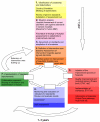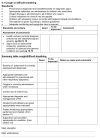Global initiatives for improving hospital care for children: state of the art and future prospects
- PMID: 18381526
- PMCID: PMC2655645
- DOI: 10.1542/peds.2007-1395
Global initiatives for improving hospital care for children: state of the art and future prospects
Abstract
Deficiencies in the quality of health care are major limiting factors to the achievement of the Millennium Development Goals for child and maternal health. Quality of patient care in hospitals is firmly on the agendas of Western countries but has been slower to gain traction in developing countries, despite evidence that there is substantial scope for improvement, that hospitals have a major role in child survival, and that inequities in quality may be as important as inequities in access. There is now substantial global experience of strategies and interventions that improve the quality of care for children in hospitals with limited resources. The World Health Organization has developed a toolkit that contains adaptable instruments, including a framework for quality improvement, evidence-based clinical guidelines in the form of the Pocket Book of Hospital Care for Children, teaching material, assessment, and mortality audit tools. These tools have been field-tested by doctors, nurses, and other child health workers in many developing countries. This collective experience was brought together in a global World Health Organization meeting in Bali in 2007. This article describes how many countries are achieving improvements in quality of pediatric care, despite limited resources and other major obstacles, and how the evidence has progressed in recent years from documenting the nature and scope of the problems to describing the effectiveness of innovative interventions. The challenges remain to bring these and other strategies to scale and to support research into their use, impact, and sustainability in different environments.
Figures




References
-
- Duke T, Kelly J, Weber M, English M, Campbell H. Hospital care for children in developing countries: clinical guidelines and the need for evidence. J Trop Pediatr. 2006;52:1–2. - PubMed
-
- Nolan T, Angos P, Cunha AJLA, et al. Quality of hospital care for seriously ill children in less developed countries. Lancet. 2001;357:106–10. - PubMed
-
- English M, Esamai F, Were F, et al. Assessment of inpatient paediatric care in first referral level hospitals in 13 districts in Kenya. Lancet. 2004;363:1948–63. - PubMed
-
- English M, Esamai F, Were F, et al. Delivery of paediatric care at the first referral level in Kenya. Lancet. 2004;324:1622–9. - PubMed
-
- Tamburlini G, Di Mario S, Vilarim JN, Schindler Maggi R. Assessment of quality of care in pediatric wards: experience in Brazil; Proceedings of the 32nd IUALTD Conference; Paris. 1-4 November 2001.

